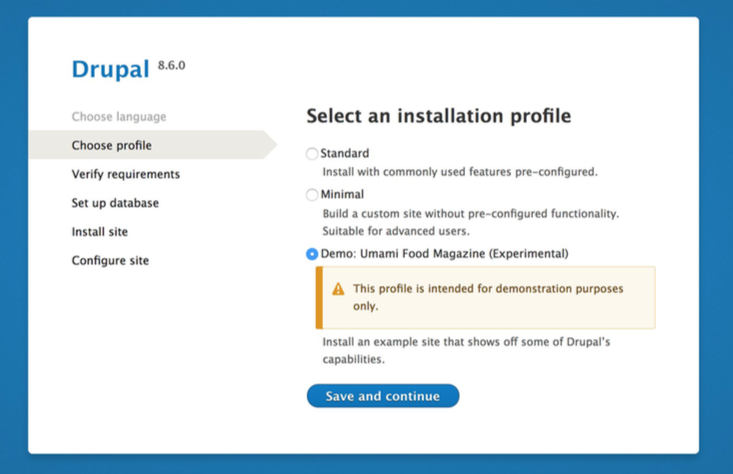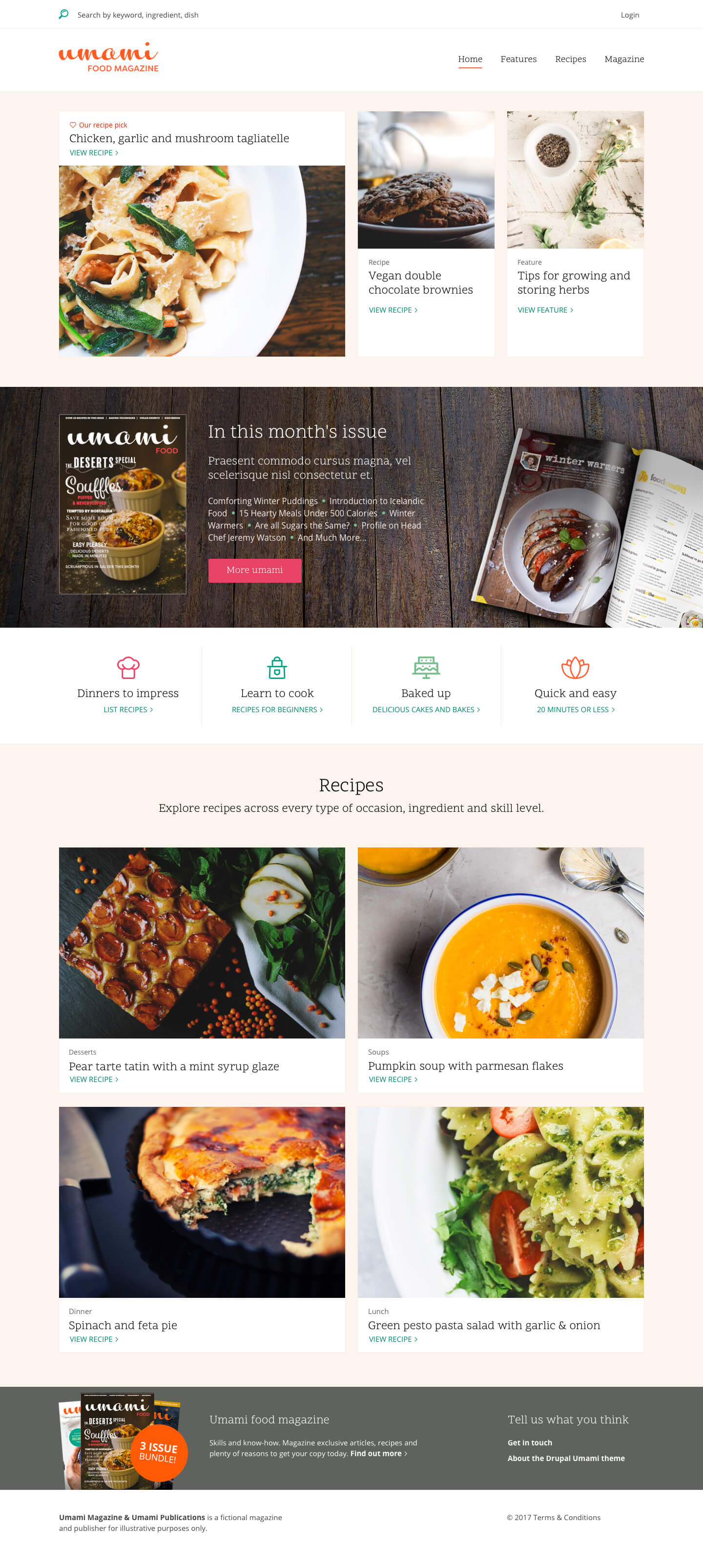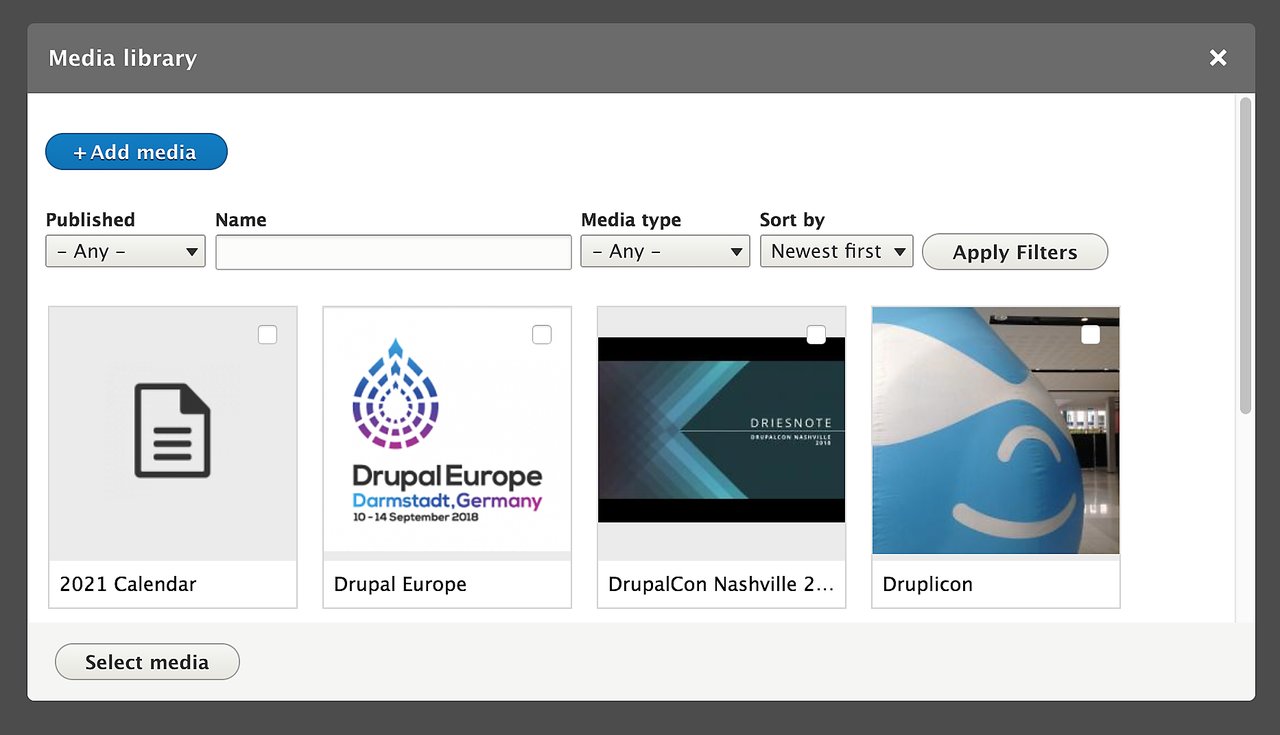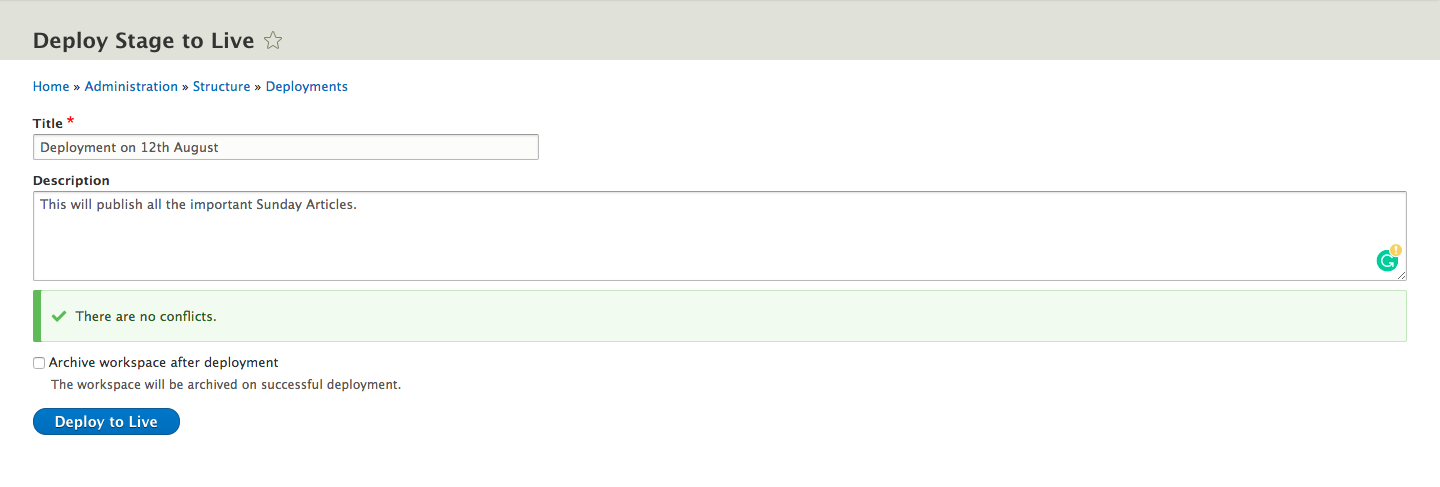The Drupal community is relentlessly working towards achieving the goal of easy usability with each version.
Not only has Drupal granted its users the ability to integrate futuristic technologies but also provided the marketers with compelling digital solutions.
On September 5, 2018, Drupal 8.6 was released. And started the wave of enthusiasm and whispers among the stakeholders.

Here's how much it has succeeded in living up to the expectations and what is to be expected from Drupal 8.7 release due in March 2019.
Drupal 8.6 is released. And this what you should be excited about!
The Drupal core team releases new (minor) versions every six months. These contain bug fixes, security patches, or both.
-
Install Drupal Quickly without Getting Bored
Installing Drupal in Two Steps
Drupal 8 can be installed from a single command, including a local web server and database.
php core/scripts/drupal install <profile_name> --no-interaction
Drupal is Boring. Not Anymore
That’s true. My first experience was as blank as the fresh installed Drupal 8.3. “What am I supposed to do with this?”, I thought.
WordPress, on the other hand, had something to fiddle with, at least.
Version 8.6 brings with it Umami.

A demo food magazine website to demonstrate features of Drupal core, Umami gives you dummy content to explore the CMS. Although released with 8.5, Umami is now part of the core under the out-of-the-box initiative.

The goal is to add sample content presented in a well-designed theme, displayed as a food magazine.
Using recipes and feature articles this will make Drupal look much better right from the start and help evaluators explore core Drupal concepts like content types, fields, blocks, views, taxonomy, quite easily.
Upgrade to Drupal 8 with Complete Migration Guide
As a magazine website, Umami is set up with some default content types — article, basic page, and recipe — which contain relevant fields for capturing structured data, such as cooking time (numeric), difficulty (list), image (file), and tags (reference).
"This minor release provides new improvements and functionality without breaking backward compatibility (BC) for public APIs."
While not intended as a starting point for new Drupal sites ("standard" is generally best for that), this option can be very useful the first time you install Drupal to get an idea of what it can do.
-
Editing Experience
WYSIWYG Experience
Drupal core comes with CKEditor, out of the box. In addition to supporting the features of WYSIWYG Editor, it supports the extras such as easily editable image captions, drag-and-drop admin interface for customizing the WYSIWYG toolbar.
It is fully integrated into Drupal 8 from utilizing Drupal’s user roles and permissions to image management, and it ensures that we keep the benefits of Drupal’s structured content concepts in our WYSIWYG implementation.
User profiles, custom blocks, and more are all editable in-place as well.
Focussing on providing a better experience to the visually impaired users, the buttons in the “button groups” with labels are invisible to the naked eye but can be read by the screen readers.
Drupal 8’s Editor module wraps around the WYSIWYG integration, so other text editors, libraries and contributed modules can be used and tightly integrated as well.
-
Media Management
Additional Media Type Support
While Drupal has long supported images and generic files, Drupal 8 expands on this with a generic "media" field, with support for local audio, video, images, and generic files, as well.

Embedding Remote Content
Drupal 8 also ships with oEmbed support, which allows the embedding of external media, such as YouTube and Vimeo videos.
Drupal 8 offers much richer media management capabilities than previous versions of Drupal.
Media Library
As an editor, you always want a seamless experience when editing. Be it with browsing blogs, or media that has been uploaded to the website.
The Media Library provides a views-based browser for previously uploaded media.
With the new version, you can add media to content via a media field, either by selecting from existing media or by uploading new media (including basic bulk upload support).
The media library is powered by views, which allows site builders to customize its display and what sorting and filtering options are available.
-
Workflow and Content Staging
Some of Drupal 8.6's most exciting new features for content authors are around workflow and moderation.
Workflows
There might be instances where an editorial team comes across challenges in the process of publishing its content. Like maintaining the cycle from the draft to publishing with various editors editing a blog.
The workflows module allow defining multiple workflows with defined states and the transitions allowed between them. Drupal 8.6 lets easy staging and preview of content in different environments.
However, workflows module merely provides a framework to manage them and the behaviors for them should be provided by other modules. That is where content moderation and staging comes in.
Content Staging
Head's up - this is an experimental feature. Although content moderation works great for staging single pieces of content, sites often have a need of staging multiple pieces of content at once and previewing the changes that will be made to content listings or landing pages.

Fortunately, the robust workspaces module and deploy module provides full content staging capabilities for these scenarios. You can define multiple workspaces (such as "staging" and "live") which are copies of your site, and create content (or modifications to existing content) that is visible only within that workspace. Then, once the changes have been verified, you can "deploy" the content to another workspace at the click of a button.
-
Layout Builder
Drupal core comes with a flexible "block" system to allow placing discrete bits of content, such as a list of who's online or an advertisement, within various page regions.
The settings tray enabled quick modifications to blocks' content, but the placement of them on the page was still tied to the theme, or "design" of the site, and its provided regions.
Choosing a custom layout no more requires you to write down long lists of codes. But this is not the only thing that makes layout interesting. The layout feature applies to much more than just content types.
Which implies that it can be used for media, contact forms, taxonomy, users, and more.

Layouts allow you to build one of the individual fieldable entities which are completely customizable.
As a marketer, it won’t take much time for you to implement new ideas into a landing page. No more do you require adding contrib modules like Display Suits or Stacks for the job.
The Layout helps to create one or more page sections and to choose from predefined options within them.
Seeing all the different issues and contributors in the release notes is a good reminder that many small contributions add up to big results.
-Dries
-
Migrate With Ease
While not all Migration challenges are covered. Here are two of the important migration challenges addressed.
- Backward compatibility
- ID Conflict with Node translation
You can read more about Drupal 8 migration challenges.
When launched, Drupal 8 didn’t provide any sort of backward compatibility in modules and hence they were to be rebuilt in Drupal 8.
However, this is solved with version 8.6. In fact, this is the first release of Drupal 8 to offer a fully supported migration path from Drupal 7. Several changes were needed to Migrate APIs to make this possible.
The most important migration module - Migrate - is not only, stable but adds up the ability to re-run migrations to pick up new content that was not available previously.
Another conflict with the multilingual website related to conflicting Node ids. Translations in Drupal 8 are stored in a completely different way than in Drupal 7 and Drupal 6.
When migrating node data from Drupal 6/7 to Drupal 8, a lot of data would point to things that no longer existed.
The Drupal Release Cycle
Starting with Drupal 8.0.0, Drupal core releases moved to a new release cycle schedule, and begin using the semantic versioning numbering system.
A release Window is decided for the site administrators (in advance) to look up for the days for a possible bug fix, security release, and minor feature releases.
For any change in release date, a public service announcement is issued before the release.
First Wednesday of every month is fixed for Bugfix release window for Drupal 8.5.x and 7.x
Third Wednesday of every month is fixed for security release window for Drupal 8.5.x and 7.x
Drupal 8.7 - The Roadmap
- Streamlined bulk-upload form - An improved media bulk upload experience which exposes all fields on a single form.
- Media Metadata improvements - A simple and intuitive tool to configure the metadata-to-drupal-fields mappings on media entities.
- Faster Upload - Drupal 8 will officially support PHP 7 and drop support for PHP 5.5 and 5.6 with 8.7 release. PHP 7 is much lighter and faster than its previous versions, which means your site becomes quicker to load.
- Bring migrate_source_csv to the core - The imported content remains in the CSV files and there is a code to read it and create the relevant entries. Having migrate_source_csv in core would allow the developers to remove that code and use migrate instead. This is important because the contenta CMS uses this for migrations.
- WYSIWYG integration - Ability to embed media into the content from the WYSIWYG editor. This will allow content creators to select from media library or create one by uploading an image without requiring any new APIs.
- Editorial workflow config moving from content_moderation into a standard profile. This would help in smoother content staging.
Drupal 8 to Drupal 9 Upgrade. What to Expect?
Over time, maintenance of backward compatibility would become more intricate. Thus, the point will be reached when too much of deprecated code is there in Drupal 8. At that time, deprecated systems will be removed and released as Drupal 9.
So, Drupal 9.0 should be almost similar to the last release of Drupal 8 excluding the deprecated code. Upgrading from Drupal’s latest version to Drupal 9.0.0 should be as streamlined as the upgrading of minor versions of Drupal 8 (eg. Drupal 8.5 to Drupal 8.6). Therefore, Drupal 9 offers a clean slate to innovate more swiftly.
The planned release date for Drupal 9 is in 2020. Drupal 9 will mainly be the last release of Drupal 8, minus the backwards-compatibility
A Note from a Content Editor
Let me be a little selfish here. Yes, Drupal 8.6 looks really good to me and I look forward to working around that editor soon (because that is what concerns me, directly).
As a content editor, I have numerous times faced issues which leave me frustrated.
Improved media bulk upload, smart alt texts for code snippets, and meta information is something I actually look forward to.
Uploading video (non-youtube content) can sometimes be a headache.
There is still scope for major improvements to Drupal’s content workflow, preview and staging capabilities. It will be done by improving aspects of the Entity API in the core.
Future Important Dates
8.7.0 Feature Freeze: March 2019
8.7.0 Release: May 2019
With all the mentioned features, I believe, the community is successful in making Drupal more intuitive and easy to use. We provide upgrade assistance, connect with us, drop a mail at [email protected] for a faster upgrade.
Subscribe
Related Blogs
Inside the Drupal AI Summit: Themes, Speaker and What To Expect

“ The web is changing fast, and AI is rewriting the rules. It writes content, builds pages, and answers questions directly,…
FOST and Drupal AI Initiative: Next Era of Responsible AI

Three years after the launch of generative AI tools marked a new age for artificial intelligence, almost 90% of survey…
Drupal AI Ecosystem Part 5: AI Content Suggestions

Drupal has steadily evolved from being just a content management system into a flexible platform that incorporates emerging…




